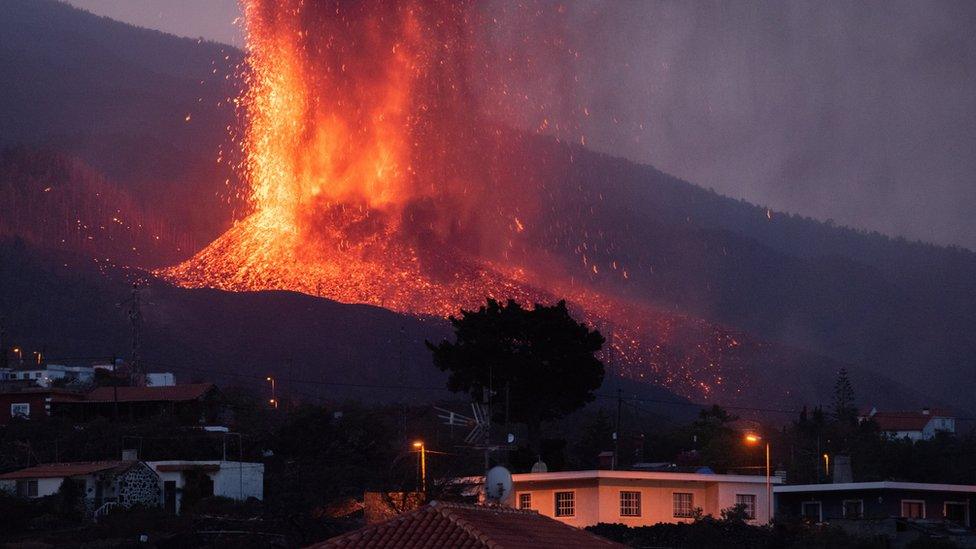La Palma volcano: How much damage has it caused? And what will happen next?
- Published
- comments

It has been reported that more than 300 homes have been destroyed on La Palma, ones of Spain's Canary Islands.
It is after the Cumbre Vieja volcano erupted, causing molten rock to spill into residential areas on Sunday.
It created a huge ash cloud and then a crack in the volcano's side caused four earthquakes to hit the island earlier this week.
Lava has now covered around103 hectares (1 sq km) of land and nobody can do anything to stop it.
大象传媒 reporter Dan Johnson explains the problems caused by lava from the volcano
How bad is the damage and are people safe?
Over 6000 homes have now been evacuated on the Spanish island, with emergency shelters being set up for the residents.
Local people from four villages have been asked to pack their essential belongings and move to safer areas.
Emergency services have been on hand to help with the evacuation process.
There have been no reports of any injuries but many farms, swimming pools, businesses and roads have all been affected.
Scientists are unsure how long this eruption will last, but there are now concerns about what will happen if the lava reaches the sea.
Residents are evacuating the area with some able to take many household belongings with them.
The Cumbre Vieja volcano last erupted 50 years ago in 1971.
What happens if the lava reaches the sea?
Scientists are concerned about lava meeting the sea because toxic gases may be released into the air.
When lava comes into contact with ocean water, it produces a gas plume known as laze.
Laze forms through a series of chemical reactions as hot lava boils the colder sea water.
The Big Question: Why do volcanoes actually erupt?
"It creates a steam of hydrochloric acid, water vapour and bits of ash," science journalist and volcanologist Dr Robin George Andrews said. "Obviously, it's not good to breathe in."
Laze plumes can cause eye, lung and skin irritation but should not be a problem if residents keep their distance, he said.
There is nothing anyone can do to stop the lava flowing into the sea, but as a precaution marine authorities have put in place an exclusion zone of two nautical miles (3.7km) at sea, in the area where the lava is heading.
They hope this will stop the gases from affecting people if they get too close.
- Published23 September 2021
- Published20 September 2021
- Published1 May
